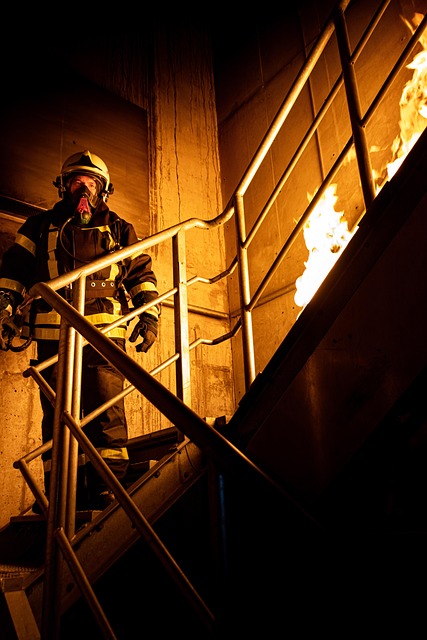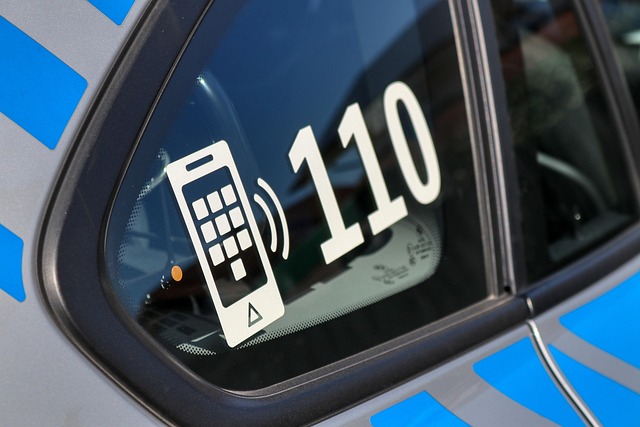Category: Emergency Porta Potty
Emergency Porta Potty: A Comprehensive Guide
Introduction
In an era where accessibility, sustainability, and emergency preparedness are paramount, the humble emergency porta potty emerges as a critical component of modern infrastructure. This unassuming yet indispensable fixture plays a pivotal role in addressing one of humanity’s most basic needs during unforeseen circumstances, be it natural disasters, large-scale events, or temporary situations. In this article, we embark on a journey to explore every facet of the emergency porta potty, from its foundational components and historical evolution to its global impact, technological innovations, and future prospects. By delving into these aspects, we aim to provide valuable insights for stakeholders, policymakers, and anyone curious about this essential portable sanitation solution.
Understanding Emergency Porta Potty: A Definition and Its Components
Definition: An emergency porta potty, also known as a portable restroom or temporary toilet, is a self-contained, mobile sanitization unit designed for short-term or temporary use. These units are engineered to provide clean and safe sanitation facilities in areas where permanent plumbing is not readily available or during situations where traditional bathroom infrastructure is compromised.
Core Components:
- Sanitation Chamber: The primary component is a sealed, insulated chamber that houses the toilet and collects human waste. These chambers are typically made from durable materials like plastic or metal to ensure hygiene and prevent odor.
- Waste Collection System: Emergency porta potties utilize various methods for waste disposal. Common systems include portable tanks with removable waste bags, chemical toilets with self-disposing mechanisms, or more advanced vacuum-based systems that separate solid and liquid waste.
- Handwashing Station: A sink or hand sanitizing station is often integrated to promote proper hygiene practices. These stations may include soap dispensers, paper towels, and hand dryers for efficient and germ-free handcare.
- Exterior Framework: The exterior structure provides stability, security, and weather protection. It typically includes locking mechanisms, grab bars for accessibility, and wheels or stabilizers for easy transportation.
- Ventilation and Odor Control: Effective ventilation systems are crucial to maintaining a pleasant interior environment. This may involve exhaust fans, carbon filters, or odor-neutralizing agents to minimize unpleasant odors.
Historical Context and Evolution
The concept of portable sanitation has evolved significantly over centuries, reflecting societal changes and technological advancements.
Ancient Times: Historically, natural cavities, such as holes in the ground or riverbanks, served as early forms of toilet facilities. As civilizations developed, public latrines became common in urban areas, showcasing a transition towards more organized sanitation practices.
19th Century: The 19th century saw the emergence of portable urinals and makeshift toilets during construction sites and military campaigns. These early mobile sanitization solutions were far from ideal but addressed immediate needs.
20th Century and Beyond: The modern emergency porta potty began taking shape in the mid-20th century, driven by the need for temporary sanitation during rapid urban development, large-scale events like exhibitions and festivals, and natural disasters. Companies started designing more sophisticated units with improved hygiene features and comfort levels.
Recent Advancements: Today’s emergency porta potties incorporate advanced technologies, such as energy-efficient lighting, waterless urinals, and touch-free sensors for enhanced cleanliness and sustainability. The industry continues to evolve, focusing on innovation in waste management, odor control, and user experience.
Global Impact and Trends
The influence of emergency porta potties is felt worldwide, with varying cultural adaptations and regional preferences shaping their design and deployment.
North America: In the United States and Canada, these portable restrooms are commonly used at construction sites, music festivals, sports events, and during power outages or natural disasters. The North American market is characterized by a strong focus on sustainability, leading to innovations in waterless technologies and biodegradable waste bags.
Europe: European countries have embraced emergency porta potties for their diverse outdoor events, from music festivals (e.g., Glastonbury) to cultural gatherings. Strict environmental regulations have spurred the development of eco-friendly models, including those with greywater recycling systems.
Asia Pacific: This region, particularly China and Japan, has witnessed significant growth in emergency sanitation due to rapid urbanization and frequent natural disasters. Local manufacturers have tailored their offerings to meet specific regional needs, resulting in innovative designs that prioritize space efficiency and cultural aesthetics.
Latin America and Middle East: These regions often rely heavily on emergency porta potties for large-scale events like the FIFA World Cup and religious festivals. The units are adapted to withstand harsh weather conditions and diverse cultural practices, ensuring a comfortable user experience.
Economic Considerations
The economic landscape surrounding emergency porta potty services is dynamic, influenced by market demand, infrastructure investments, and regulatory frameworks.
Market Dynamics: The global portable restroom market has experienced steady growth, driven by factors such as increasing outdoor events, construction activities, and natural disaster preparedness. According to a 2021 report by Market Research Future (MRFR), the market is projected to reach USD 3,694.7 million by 2028, growing at a CAGR of 5.6% during the forecast period (2021-2028).
Investment Patterns: Private investments in emergency sanitation services have been significant, fueled by the potential for lucrative short-term contracts and the growing emphasis on public health and safety. Startups and established companies alike are investing in research and development to create more efficient and sustainable products.
Role in Economic Systems: Emergency porta potties contribute to local economies by supporting various sectors:
- Events and Entertainment: They are essential for music festivals, sporting events, trade shows, and conferences, generating revenue for event organizers and related industries.
- Construction and Infrastructure: On construction sites, these units ensure compliance with health and safety regulations, fostering a productive work environment.
- Disaster Relief: During emergencies, they provide critical sanitation facilities, preventing the spread of diseases and supporting recovery efforts, which can have long-term economic benefits.
Technological Advancements
Technological innovations play a pivotal role in enhancing the functionality, sustainability, and user experience of emergency porta potties.
Smart Sanitation: The integration of Internet of Things (IoT) technology enables real-time monitoring of waste levels, tank capacities, and unit location. This data can optimize fleet management, predict maintenance needs, and enhance customer service.
Vacuum Waste Systems: Advanced vacuum-based systems offer a more hygienic and efficient waste disposal method. These systems separate solid and liquid waste, reducing odour and minimizing the risk of contamination.
Waterless Technologies: Waterless urinals and hand dryers reduce water consumption and eliminate the need for frequent cleaning, making them ideal for events and areas with limited water access.
Solar Power and Energy Efficiency: Solar panels integrated into porta potties provide off-grid power for lighting, ventilation, and other electrical components, reducing reliance on external energy sources.
Biodegradable Materials: Manufacturers are increasingly using biodegradable materials for waste bags and exterior components, aligning with sustainability goals and reducing environmental impact.
Policy and Regulation
The development and deployment of emergency porta potties are subject to various policies and regulations that ensure public safety, environmental protection, and fair business practices.
Health and Safety Regulations: Local health departments dictate the minimum standards for portable restroom facilities, including sanitation, handwashing stations, and regular cleaning protocols. These regulations vary across regions but generally aim to prevent disease transmission and maintain hygiene.
Environmental Policies: Environmental agencies oversee waste management practices, especially in eco-sensitive areas. Regulations may include restrictions on chemical toilets, requirements for proper waste disposal, and guidelines for minimizing environmental impact during deployment.
Licensing and Permitting: Businesses operating emergency porta potty services must obtain licenses and permits from local authorities, ensuring compliance with health, safety, and environmental standards. These processes help maintain quality control and consumer protection.
Disaster Preparedness Plans: In disaster-prone regions, specific regulations mandate the availability of portable sanitation during emergencies. These plans include provisions for rapid deployment, maintenance, and waste management, ensuring a coordinated response to crises.
Challenges and Criticisms
Despite their significance, emergency porta potties face several challenges that require strategic solutions to enhance their effectiveness and public perception.
Sanitation Concerns: One of the primary criticisms revolves around sanitation and potential health risks. Critics argue that these units may not always meet strict hygiene standards, particularly in remote or poorly maintained locations. Addressing this challenge requires stricter enforcement of maintenance protocols, regular inspections, and the adoption of advanced sanitization technologies.
Environmental Impact: The environmental footprint of emergency porta potties is a point of contention. Traditional models contribute to waste accumulation, especially when disposable materials are used excessively. Sustainable practices can mitigate these concerns by promoting reusable components, biodegradable materials, and efficient waste management systems.
Accessibility and Inclusivity: Ensuring equal access to clean and safe portable restrooms for all users, including individuals with disabilities, is essential but often overlooked. Design considerations should include accessible entrances, adequate space, and appropriate grab bars or supports to cater to diverse user needs.
Perception and Social Stigma: Emergency porta potties sometimes carry a social stigma, leading to reluctance in their adoption. Overcoming this requires public education campaigns that highlight the critical role of these facilities in maintaining public health, especially during emergencies.
Case Studies: Successful Applications and Lessons Learned
Case Study 1: Disaster Relief in Hurricane-Prone Regions
In hurricane-prone areas like Florida, emergency porta potties play a vital role in post-disaster recovery. Local governments partner with private sanitation companies to deploy thousands of portable restrooms after major storms. This collaboration ensures a swift response, providing much-needed sanitation facilities for displaced residents and first responders. Regular maintenance and cleaning protocols are strictly enforced to prevent disease outbreaks.
Key Lessons:
- Timely deployment is crucial during emergencies, and pre-established partnerships can significantly expedite the process.
- Stricter hygiene standards and regular monitoring can minimize health risks associated with portable sanitation.
Case Study 2: Festival Sanitation in Europe
European music festivals like Tomorrowland in Belgium have embraced innovative emergency porta potty solutions to cater to hundreds of thousands of attendees. The festival organizers work closely with eco-conscious sanitation providers who offer advanced units with greywater recycling and biodegradable waste systems. These sustainable practices not only reduce the environmental impact but also create a positive user experience, fostering brand loyalty.
Key Insights:
- Eco-friendly designs can enhance the overall festival experience and attract environmentally conscious attendees.
- Partnering with organizers to tailor solutions to specific event needs is essential for successful implementations.
Case Study 3: Construction Site Management in Asia
In bustling construction sites across Asia, emergency porta potties are integrated into comprehensive health and safety programs. Companies like Huawei in China have implemented portable restroom systems that include regular cleaning, handwashing stations with disinfectants, and waste separation to promote a safe and hygienic work environment. This approach has led to improved worker morale, reduced absenteeism, and better overall productivity.
Lessons Learned:
- Emergency porta potties can contribute to a positive company culture and employee satisfaction when combined with robust health and safety programs.
- Customized solutions tailored to specific construction site needs are more effective than one-size-fits-all models.
Future Prospects: Emerging Trends and Strategic Considerations
The future of emergency porta potty services looks promising, driven by technological advancements, growing environmental consciousness, and evolving public expectations.
Sustainability and Eco-Friendliness: The demand for sustainable solutions will continue to rise, pushing manufacturers to develop more environmentally friendly products. Biodegradable materials, waterless technologies, and energy-efficient designs will likely become the norm, reducing the industry’s carbon footprint.
Smart Sanitation Ecosystem: The integration of IoT and mobile applications will enable real-time monitoring and management of portable restroom fleets. This technology allows for optimized deployment strategies, predictive maintenance, and enhanced customer feedback loops.
Disaster Preparedness and Response: As climate change intensifies, the need for robust disaster preparedness will grow. Emergency porta potties will play an even more critical role in ensuring quick responses during floods, wildfires, and other natural disasters, providing essential sanitation facilities for affected communities.
Customized Solutions and Personalization: Future trends will see a shift towards customized solutions that cater to diverse user preferences and cultural norms. Portable restrooms may offer various amenities, such as touch-free sensors, heated seats, or even charging stations for mobile devices.
Conclusion: A Vital Component of Modern Infrastructure
The emergency porta potty has evolved from a modest solution to a critical component of modern infrastructure, addressing the fundamental need for sanitation in diverse circumstances. Its global impact is evident across various sectors, from events and construction to disaster relief and outdoor recreation. As technology advances and environmental awareness grows, these portable restrooms will continue to adapt and play a pivotal role in ensuring accessibility, safety, and sustainability worldwide.
By embracing innovation, addressing challenges, and prioritizing public health and the environment, stakeholders can maximize the potential of emergency porta potties. The future holds immense possibilities for this unassuming yet indispensable invention, shaping the way we approach portable sanitation in an ever-changing world.
FAQ Section: Addressing Common Concerns
Q: How do emergency porta potties ensure hygiene and prevent disease transmission?
A: Emergency porta potties maintain hygiene through regular cleaning protocols, including sanitizing surfaces, providing handwashing stations with soap and water (or alcohol-based hand sanitizers), and proper waste management. Strict adherence to health department guidelines further minimizes the risk of disease spread.
Q: Are emergency porta potties environmentally friendly?
A: While traditional models contribute to waste, modern designs prioritize sustainability. Waterless technologies, biodegradable materials, and efficient waste disposal systems minimize environmental impact. Many manufacturers are also exploring renewable energy sources, such as solar power, for off-grid operations.
Q: How do I choose the right emergency porta potty for my event?
A: Consider factors like event size, duration, location, and specific needs (e.g., accessibility, amenities). Research local regulations, consult with sanitation providers, and request quotes for tailored solutions that meet your requirements.
Q: Can emergency porta potties be used during long-term events or disasters?
A: Absolutely. These units are designed for extended use, with some models offering up to 7 days of waste capacity. During long-term events or disasters, regular maintenance and monitoring are crucial to ensure continuous service and prevent health hazards.
Q: How do I report an issue with a portable restroom service?
A: Contact the service provider directly via phone or email. Describe the issue clearly, including location, date, time, and specific details. Most companies have customer service representatives who can address concerns promptly.
Navigating Emergency Porta Potty Needs for Seamless Community Events

When organizing community events in venues like San Mateo county fairgrounds, proper planning for em…….
24/7 Emergency Porta Potty: Solutions for Every Need

Access to clean and safe emergency porta potties is critical for event planners to maintain attendee…….
Streamline Events with Same-Day Emergency Porta Potty Installation

For events in bustling urban areas like the Bay Area, proper sanitation with emergency porta potty s…….
Emergency Porta Potty Rentals: Rapid Solutions for Diverse Events

In emergency situations, traditional porta potties are insufficient. Emergency Porta Potty rentals o…….
Emergency Porta Potty Rentals: Construction Site Sanitation Solutions

Emergency Porta Potty rentals provide swift sanitation solutions for construction sites and events i…….
24/7 Emergency Porta Potty Solutions for Every Need

Unexpected events often require immediate access to functional toilets. Emergency porta potty servic…….
Revolutionize Events with Quick Portable Restroom Delivery
Emergency Porta Potty: Choosing Quality Local Rentals for Seamless Setup

In unforeseen emergencies, quick access to portable sanitation is crucial for hygiene and comfort. L…….
Finding Instant Relief: Local Urgent Porta Potty Solutions

Local emergency porta potty services are crucial for public health and accessibility in areas with l…….

